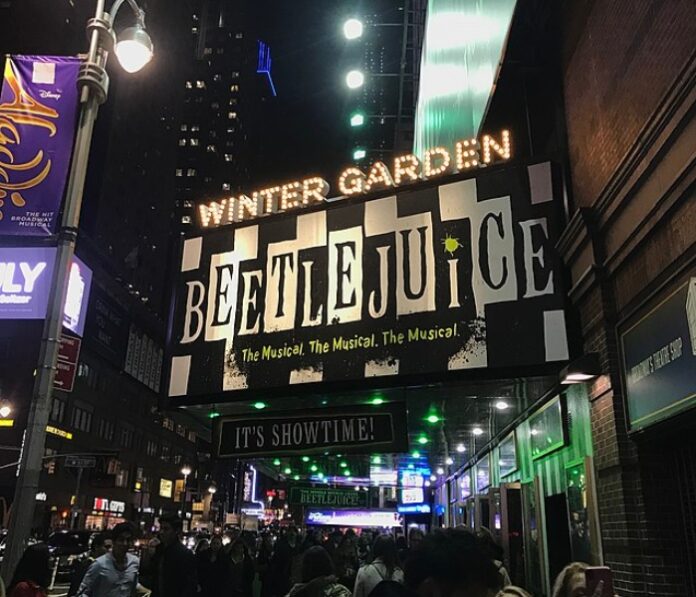
Released earlier this year, “Beetlejuice Beetlejuice” has taken the movie world by storm, already becoming the third highest-grossing movie of 2024, with still more potential to rise higher. However, for this review, I decided to go back to the origin of “Beetlejuice 2”: “Beetlejuice”.
“Beetlejuice” was released in 1988 to much critical acclaim. It became the 10th-highest-grossing movie of the year, won Best Makeup at the 1989 Oscars, and helped bring Tim Burton into the larger Hollywood scene.
The movie also stars an incredible cast, including household names like Micheal Keaton, Alec Baldwin, Catherine O’Hara and Winona Ryder.
But what makes this movie so popular? Watching it for the first time, I was struck mostly by the chaotic and seemingly meaningless plot and action.
The movie opens with a young couple, the Maitlands, played by Alec Baldwin and Geena Davis, who die in the first 10 minutes of the movie. Their house is then sold to the Deitz family.
The father, played by the late Jeffery Jones, longs for “relaxation,” his wife is an aspiring sculptor played by Catherine O’Hara, and their macabre, “strange, and unusual” daughter, Lydia, is played by Winona Ryder.
The Maitlands do not approve of the Deitzes and begin a series of haunting and horrors. They make multiple trips from the house to the Afterlife in search of knowledge and information about how to be better haunters. In this search, they come across Beetlejuice (or Beetleguese as he’s referred to in the movie).
Beetlejuice, however, is much too wild and unpredictable for the Maitlands and they end up refusing his help. However, later in the movie, Lydia, who it is revealed can see ghosts, recruits the help of Beetlejuice to save the Maitlands from a disastrous exorcism. The one condition is that Lydia must then marry Beetlejuice.
The movie ends with a chaotic marriage scene, with the Maitlands, Deitz and Beetlejuice battling it out before the ceremony finishes. Beetlejuice is eventually sent back to the Afterlife and the Maitlands and Deitz live together in harmony.
While this might seem like an incredibly random and crazy story line, “Beetlejuice” contains many elements that make it worth watching that are not obvious.
For one, looking at “Beetlejuice” from a technical standpoint, the movie is an amazing and iconic celebration of Burton’s skills as a director and artistic designer. The sets, makeup, costuming and special effects of “Beetlejuice” alone make the film a feast for the eyes. Coupled with the comedic streak of Burton, the film always has something to present to its audience.
“Beetlejuice” also tackles some surprisingly deep philosophical topics, hidden under the chaotic comedy. One such topic is that of marriage. In the film, we have three couples: the honeymooning but childless Maitlands, the bickering and unhappy Deitz and the strange, almost “marriage of necessity” between Lydia and Beetlejuice.
By the end of the film, each one of these marriages changes and is fixed. The Maitlands gain a foster child in the character of Lydia, the Deitz learn to be compatible and Beetlejuice is banished before following through with his plan.
“Beetlejuice” does in fact merit all the acclaim and fame its reputation gives it and is a funny move to boot.